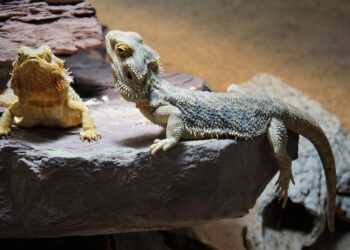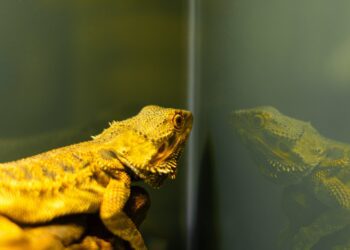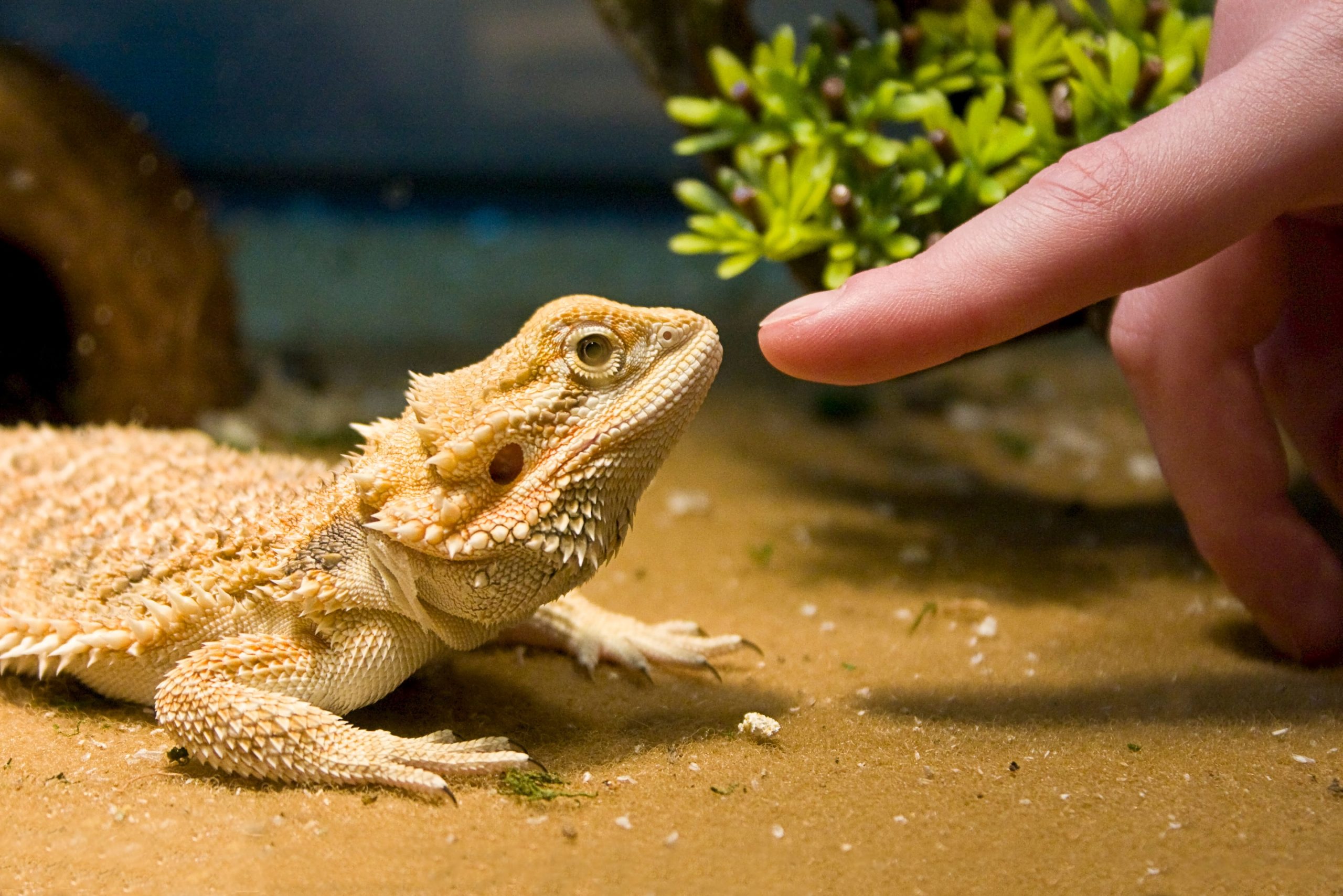Bearded dragons are easily stressed and the owner, if they are novice gets stressed too. These fascinating reptiles are much curious by nature and the change in the atmosphere or surrounding causes them tension. Once you bring them home, the shock of the change in their habitat makes them annoyed. Then you need to check if the little creature is showing signs of getting stressed.
To understand and recognize the signs of the stress, you have to know a little more about the bearded dragon. These cute creatures are sensitive and take time to get adapted so the time in between can be experienced as the time of adjustment. The bearded dragon owners always find this period difficult.
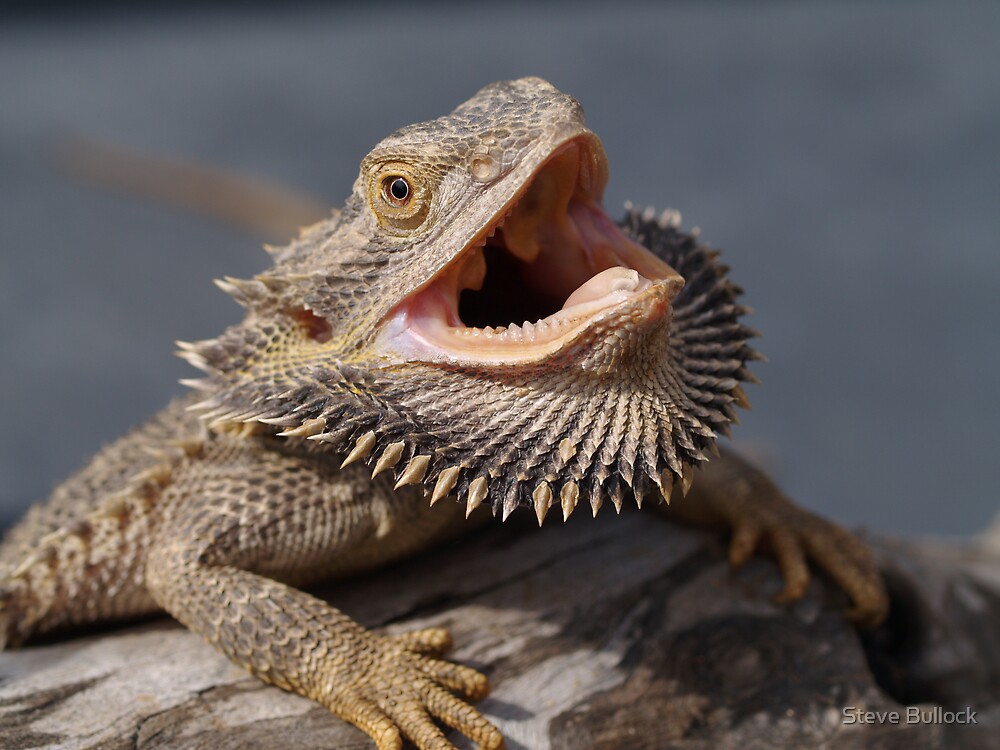
Contents
The symptoms of stress:
The primary symptom you will find in a bearded dragon is, improper eating and dark coloration. You can learn some Facts about Bearded Dragon You Must Know before Buying One.
Less eating:
Your bear will seem to eat les suddenly once it is relocated. Even if the dragon is a good and healthy eater, it will suddenly start eating frugally and will stay lethargic. When the animals feel threatened or alienated, they will eat less as it destroys their hunger. Also if you are not sure about the less eating then you can get it once checked from the vet, but possibility is, if you have recently shifted its base, it will feel calmer and more timid.
Lower activity level:
You can see the little one not playing around its cage and moving much lesser. In this situation you can check the temperature and lighting of the cage. If everything is proper then you should check if the intake of protein, vitamin and mineral is adequate in its diet. Sometime the calcium deficiency causes these reptiles loose energy and disturbs the calcium and phosphorus ratio in their body.
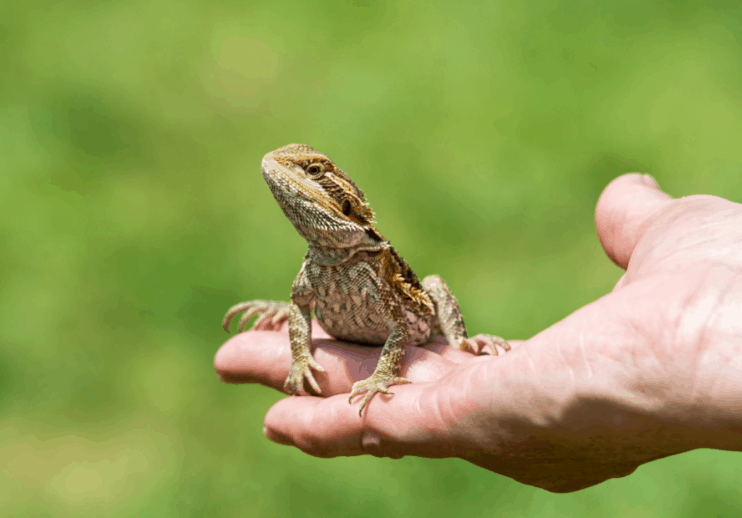
Dark coloration:
The reptile discussed here, bearded dragon has the ability to change the coloration of their body depending upon various factors. When they are on their own and in wild it happens due to natural change of atmosphere. But when in captivity, the reason of coloration can be varied. Sometimes there are harmless reasons included like shading or need of communication with other bearded dragons. Temperature regulation can be another reason of coloration. But stress and anxiety can be another cause of dark coloration of the bearded reptile.
Irregular basking:
All bearded dragons bask in the heat and light. This way they get the energy from the sun. When in captivity, they get it from the light in their cage. But when the dragon feels threatened, it does not go out for basking and prefer to stay inside the shelter.
Glass surfing:
Have you seen your bearded dragon jumping frantically and scratching the floor or the walls of cage? This is a symptom of high agitation and feeling of danger. Relocating can cause this behavior and it must be checked to keep the dragon in healthy state.

Stress marks:
These marks appear as dark lines on the belly of the bearded dragons. Also you can find dark oval shape marks on their body. You need to look closely to find these marks. It can also appear on the limbs or in the beard but most commonly these appear on the belly. If the dragon experiences stress due to some internal or external reason then these marks may appear. These marks disappear with time if the situation remains calm. Some baby dragons have these marks on their body which eventually disappears when they mature.
- Now we have discussed almost all the symptoms of the stress in the bearded dragon and will be moving towards the causes of this state.
- Some internal causes like health problem, or moroseness due to loss of its friend. When the physical health is not good the dragon feels down. If the issue is small, it will be okay on its own. But if it does not do so, then you may need to see a vet.
- There can be other issues which act as external causes to irritate the bearded dragon. Some of them are discussed below.
Relocation or shifting to new cage:
This one has been one foremost and primary cause of tension or irritation among bearded dragons. When you buy a bearded dragon and brings it home for the first time, it takes time to get adjusted to its new place and cage. It has been watched that at least 2 to 3 weeks are needed for the proper adjustment to the new accommodation of a dragon.
Temperature issue:
The dragon sleeps all night in cold temperature and often tends to show up with stress marks. You need to make sure when it is the time to go to sleep for the dragon, the temperature is set at 70-75 degree F. This way you can make sure that the dragon does not suffer in cold during the night and have a healthy body and mind.
Rapid change in lighting:
Make sure that the cage of the bearded dragon has a consistent light. If the voltage fluctuates or the setting of the light is improper, then the dragon may feel restless as the change of lighting will create unrest in it.
Tapping on the walls:
It happens when there are kids at home. For the dragon the cage is its house. Kids often play by tapping on the glass walls of it and that way they get excited as the dragon keeps reacting to the nods. But for the dragon this is quite exhausting and it can get stressed.
Shrill sound:
For any reason, if any loud and shrill sound is played near the cage of the dragon, the noise and the vibration can make it restless.
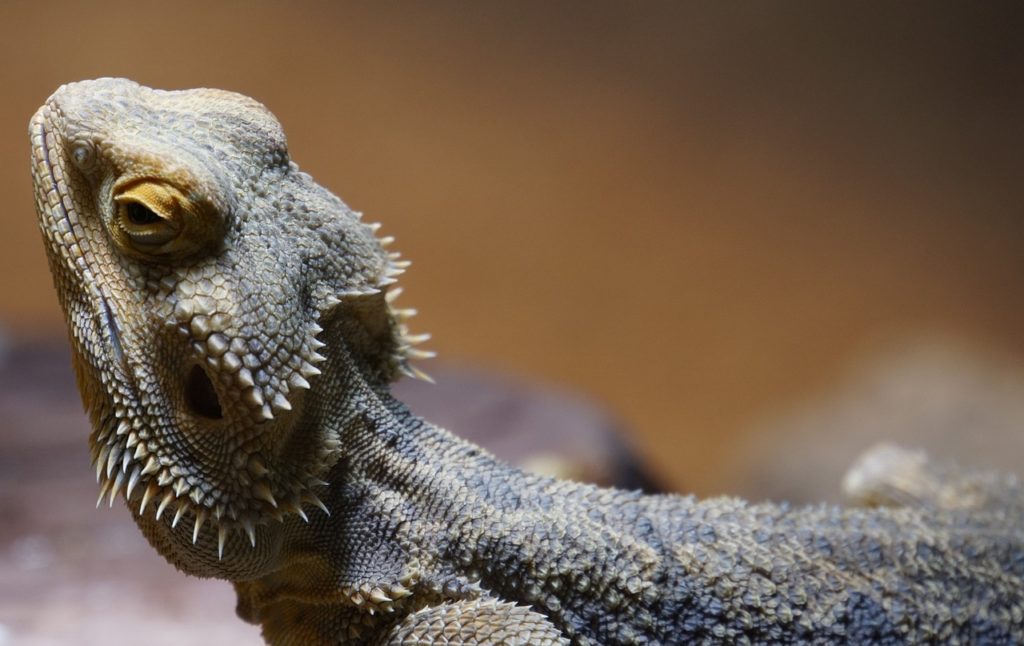
Tips for Calming Down and Destressing Bearded Dragons
Minimum handling is an effective strategy to handle an agitated dragon. Try not to touch it when not necessarily needed. This way you will not excite it or make it defensive. Let them settle down and be comfortable in its condition.
- If the noise or light is making it anxious, then change the temperature, control the noise or light and make the cage as much comfortable for it as possible. Repeated change in the temperature, creating loud sound in its surroundings or tapping the wall to create vibration definitely disturbs it. So minimize the external activators and let it be in peace for some days. It will gradually calm down.
- When you buy a new dragon and it is shifted to a new place, it feels excited and stressed. If it allows you, play with it and let it be accustomed with its new owner. The bonding will do good for both you and the pet.
- Giving them a soothing 20 minute warm bath always works best for calming the bearded dragon promptly. The water should be between 85 to 92 degrees F. but do not hold or touch it by its head as they feel light and temperature from the centre part of their head. While touching it there, you may make it defensive and threatened.
Conclusion:
Bearded dragons are not supposed to be kept in one cage, so if you have one dragon already, keep the newcomer to another cage. Also offer it food to distract it from the irritation, but take the uneaten food away from the cage.





